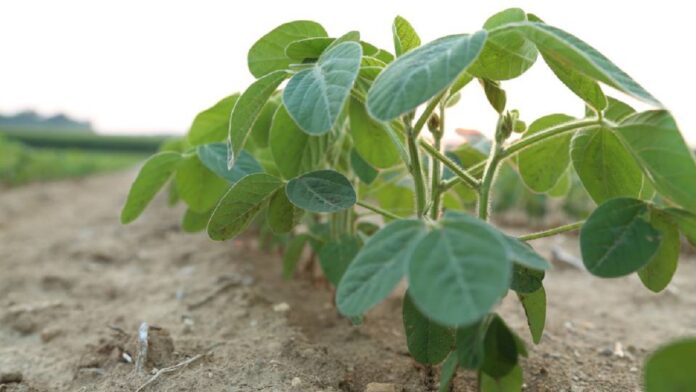Soybean is a hotcake. It sells quickly and easily. Soybean production is a good farming business.
Scientific name: Glycine max
It is cultivated worldwide for food and industrial use. Soybean is recommended for solving the problem of malnutrition due to its high nutritional content. Each grain contains 40% protein and 20% oil and contains all the essential amino acids: methionine, cysteine, and lysine. It is an important ingredient in animal feed, leading to high productivity in animals like pigs, poultry, etc.
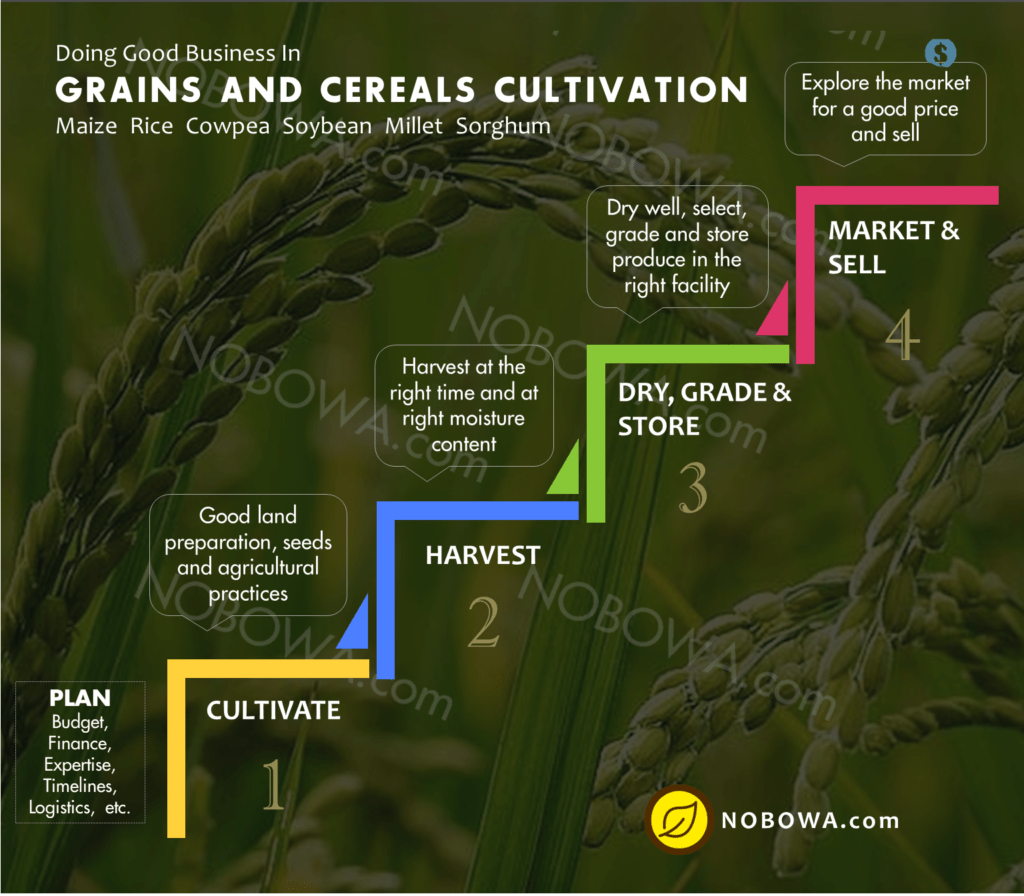
Read also: A Comprehensive Guide to Using No-till technology for Successful Maize Production
Soybean is a legume. It is able to fix atmospheric nitrogen into the soil thereby minimizing the amount of fertilizer on the subsequent cereal crop. There is rising demand and money-making opportunities in Ghana in the poultry industry for soybean.
In the end, you will know all you need to do to successfully grow and store your soybean before selling.
STAGE 1: BEFORE YOU PLANT
Selecting a good site
You can grow soybeans in all of the country except in the acidic soils of the high rainforest and the drier savannah areas. The best areas are the savannah and transition zones.
Ideally, flat land with well-drained loamy soil. Avoid areas with gravel or clay. Gravels cannot hold enough water for good plant growth whereas clay holds too much water not good for plant growth. If your land can grow maize then it is good for soybean.
Test your soil to know if it is suitable.
Read also: 7 Master Keys To Good Site Selection for Farming Purposes
Preparing your land for soybean production
You must keep in mind that in soybean production, like other farming ventures, reducing the cost of production is key to profitability. Effective land preparation will reduce the cost of subsequent activities like weed control, fertilizer application, irrigation, etc.
Practice no-tillage where suitable. That is no “slash and burn” and no ploughing. In this case, the cost of ploughing is eliminated. Also, the residue on the surface of the land serves as a good soil cover that reduces weed growth and also acts as a mulch to reduce soil water loss. It also reduces erosion and has many other benefits.
You can also use mechanical or animal-drawn implements or hoe to plough where necessary. Good land preparation should reduce weed infestation and good seed germination.
Choosing soybean variety for production
There are a number of improved varieties of soybean in Ghana. You must select varieties that are recommended for your area. Make your selection based on potential yield, maturity period, ability to withstand drought, lodging, resistance to pests and diseases, and resistance to shattering.
Late maturing varieties have higher yields. However, choose early maturing varieties if your area has low rainfall.
See details of varieties in the link below.
11 Highly Improved Soybean Varieties With Amazing Yield and Features
Preparing your Seed for Planting
Seed test
Do not use seeds that have been stored for more than a year. Soybeans tend to lose their viability after that period.
Select seeds that are free from insects, disease and weeds. For quality assurance, buy your seeds from certified seed companies or accredited producers and outlets.
Certified seeds always indicate the germination percentage. Otherwise, conduction your own germination or viability test to see if your seeds are good for planting.
Learn in 3 simple steps how to do seed germination or viability test.
Seed dressing
Some seeds may carry disease pathogens and insect pests. To prevent them from spreading to the farm after sowing, treat your seeds. Do that with fungicides such as Captan, Apron Plus, or Thiram at the rate of one sachet per eight kilograms of seeds before planting for protection against soil-borne fungal diseases.
Read also: Keys to select quality crop seeds
STAGE 2: PLANTING
When to plant soybean
Plant soybean at such a time that it matures during the dry period. You can plant after consistent rainfall. Avoid planting too early before the rains. Also do not plant too late. The plants will suffer if the rains stop early.
Recommended dates for planting soybean in Ghana
| Ecological zone | Suggested time of planting |
|---|---|
| Derived savanna/southern Guinea savanna | Early June to early July |
| Northern Guinea savanna | Mid-June to early July |
| Sudan savanna | Early July |
Plant spacing and seeding rate
Soybean varieties vary in size, so it is important to consider planting in terms of seed/unit area. Soybean size ranges from 12.6 to 18.9g/100seeds.
Plant 40-45kg of seeds per hectare. This will ensure a very good plant population.
You can sow by hand or with a planter. Plant in straight rows. This makes weeding, pests control and harvesting easier. You can plant on flat land or ridges made with any suitable farm machinery or implement.
For seeds with a high germination percentage, plant 2 seeds per hill at a spacing of 75 cm between rows and 5 cm within the row or between plants on each row. A spacing of 60cm x 5cm is good for early maturing varieties like Soung-pungun. Early maturing varieties respond better to narrow spacing than late maturing ones.
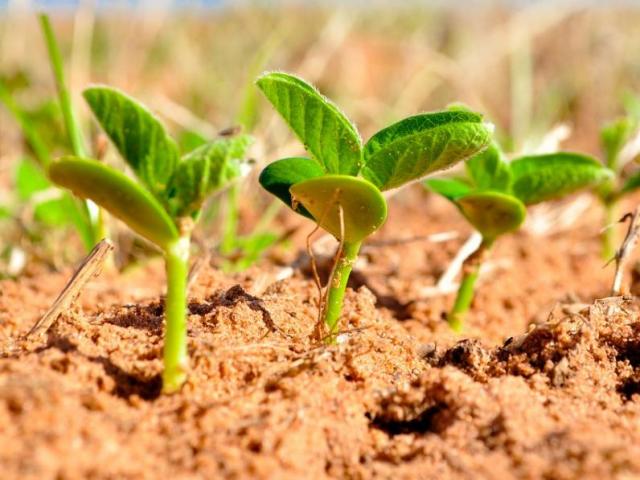
Applying fertilizer on soybean
Soybean is a legume and it traps and stores atmospheric nitrogen in nodules on the roots. Before the nodules are formed, the soybean plant uses the soil nitrogen for growth. Phosphorus is usually lacking, so apply an adequate amount of phosphorus fertilizer for a good yield. In northern Ghana, a recommended rate of 25 kg of nitrogen (urea or sulphate of ammonia), 60 kg of P2O5 (single superphosphate) and 30 kg of K2O (muriate of potash) is applied. You can incorporate the fertilizer into the soil during harrowing for land preparation. Alternatively, you can apply cow dung, farmyard manure, or compost to enrich your soil.
Read also: Why is Organic Fertilizer Better for Crops and Soil Improvement?
STAGE 3: PESTS AND DISEASES
Weeds control in soybean production
Controlling weeds in soybean production reduces competition for water, nutrients, space and sunlight. It is important to control weeds at the early stages within the first 6 weeks of the soybean plants to reduce competition. You can do this manually, with a chemical, or a combination of both. It is best to use Integrated Weed Management principles.
Manual weed control
Control weeds 2 weeks after planting. Depending on the density of weeds, weed again 2 weeks after the first weed control. If the plant grows well enough, the canopy forms and closes early. In this case, there may not be a need for the second weeding.
When necessary, second weeding should be done before flowering. This prevents flowers from dropping. Also, avoid weeding immediately after rainfall. Some notorious weeks may be transplanted in the process.
Chemical weed control
You can use pre-emergence and post-emergence herbicides in soybean production. The choice of herbicides depends on the weed species and the availability of chemicals.
Always read the instructions for the correct application rates. Also, take precautions in the application of these agrochemicals. Seek expert advice if necessary.
Controlling insect pests in soybean production
At the vegetative stage, the soybean plant is very tolerant of caterpillars such as leaf rollers but very susceptible to Silverleaf whitefly attack.
Defoliation by insects during the growing stages is not much of a problem. However, at flowering and pod-filling stages, defoliation poses a big threat to yield.
Pod-sucking bugs are attracted to the soybean plant from the flowering stage. This can reduce grain yield and seed quality. It is, therefore, important to protect the plant at those stages for good yield.
You can control insect pests with a single or two sprays of Cypermethrin +
Dimethoate 10 E.C., K-Optimal (Lambda-cyhalothrin + Acetamiprid) or any
appropriate insecticide.
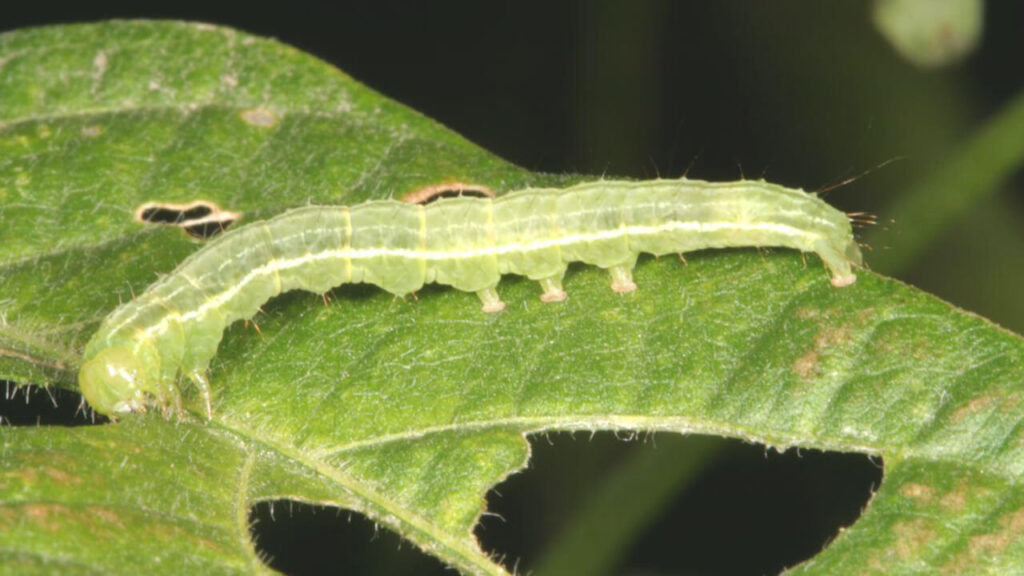
Diseases control in soybean cultivation
Soybean rust caused by Phakopsora pachyrhizi is a major disease of economic importance. When the plant is infested, the leaves tend to have a small tan to dark brown or reddish-brown lesions on which small raised pustules (or ‘bumps’) occur on the lower surface of the leaves.
This disease is severe in high rainfall areas.
Another disease similar to rust is the bacterial pustule caused by Xanthomonas axonopodis pv. glycines.
Symptoms of this disease appear as minute pale green spots that enlarge to
irregularly shaped lesions. Most lesions have prominently raised pustules on
the undersurface of leaves.
The soybean mosaic virus disease is another common disease of soybean in
Ghana. It is transmitted by aphids and other insect vectors.
Symptoms of plants infected with soybean mosaic virus can range from no
apparent symptoms to severely mottled and deformed leaves. Mottling appears as light and dark green patches on individual leaves. Symptoms are most obvious on young, rapidly growing leaves. Infected leaf blades can become puckered along the veins and curled downward.
Other diseases of soybean in Ghana include charcoal rot, Cercospora leaf
blight, brown spot, anthracnose etc. Contact the agricultural extension area in
your area for proper diagnosis and control of diseases in your soybean field.
STAGE 4: HARVESTING AND POST-HARVEST HANDLING
Soybean matures within 3-4 months after planting. It requires timely
harvesting to check excessive yield loss.
Harvest soybean when about 85% of the pods have turned brown for a non-shattering variety but 80% for shattering varieties.
Stack them loosely on a tarpaulin and allow them to dry in the open for 2 weeks before threshing. Do not harvest by hand pulling. This may remove the nutrients that the soybean has added to the soil. Harvest by cutting the mature plants just above ground level. Harvesting should normally be done in the morning hours when temperatures are low to avoid shattering.
Read also: Soybean Harvesting, Storage, and Marketing – Best Practices
Threshing soybean
Thresh manually or mechanically when the plants are properly dry and as soon as possible. Manual threshing is recommended for small scale production. It involves piling soybean plants on tarpaulin or putting soybean pods in sacks and gently beating them with a stick.
The beating should be gentle to avoid destroying the embryo which may affect germination and overall seed quality. The material should then be winnowed to remove soybean debris and other trash. Use mechanical threshers in large-scale production. Such threshers are equipped with blowers that separate the grains from the chaff.
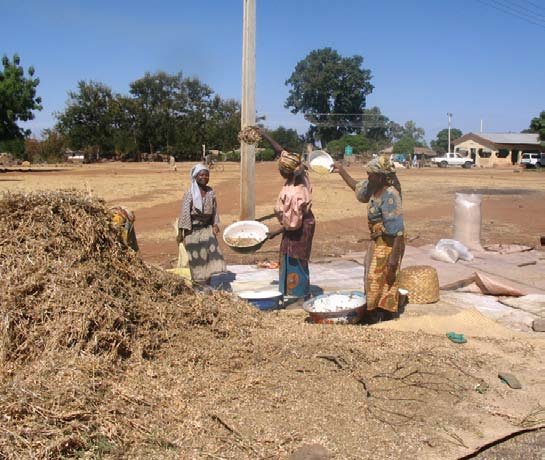
Storage
At harvest, the grain contains about 14% moisture. Dry to 13% moisture for
storage of 6-12 months and to 10 or less for longer storage. It is sufficiently dry when it cannot be dented with the teeth or fingernails.
Do not leave soybean exposed to high temperatures, as it will increase deterioration and reduce seed viability. Soybean should be stored in sacks that should be raised off the ground.
Reference
Farmer’s Guide to Successful Soybean Production in Ghana – CSIR-SARI
